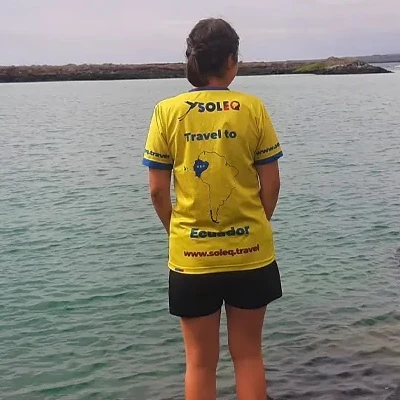
The National Park Yasuni offers an incredible variety of plants and animals. Discover with us this amazing place in the Amazon Rainforest!

The journey to Coca
So, slightly exhausted from the night, we arrived in Coca, ate Patacones and Tigrillo for breakfast. After that we walked about 40 minutes to the harbor where the boat was supposed to leave for the “Napo Cultural Center”.
Since the boat was scheduled to leave at 11am, Diego and I still had some time to see the town. Therefore, we walked about 10 minutes to the museum “Museo Arqueológico y Centro Cultural de Orellana”. Unfortunately, on the spot itself we found out that the museum was closed. Despite this, we were able to walk to an observation deck and had a great view of Coca’s promenade and the “Rio Napo”. The climate in Coca is definitely different from that in Quito, where it is rather cold in December and you should dress with several layers. In Coca, it was warm and therefore the perfect weather for shirts and shorts.
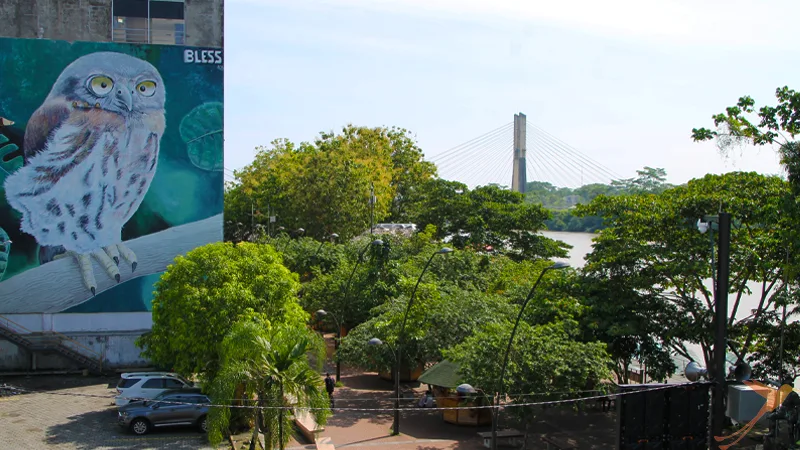
Diego and I took a look at some small stores at the promenade, then we went back to the harbor. We left Coca at 11 o’clock with a motorboat to go to the “Napo Cultural Center”.
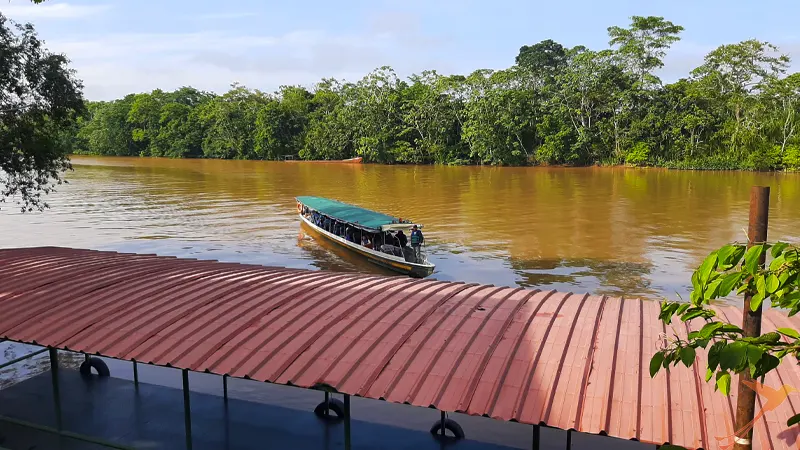
We were greeted with small welcome gifts, including a dry bag, a water bottle and food. The journey by motorboat across the Napo River to the “Napo Cultural Center” took two hours. Four guests, our guide Miguel, Diego and I got off here The other guests continued to the “Napo Wildlife Center” where Diego and I were to go the next day.
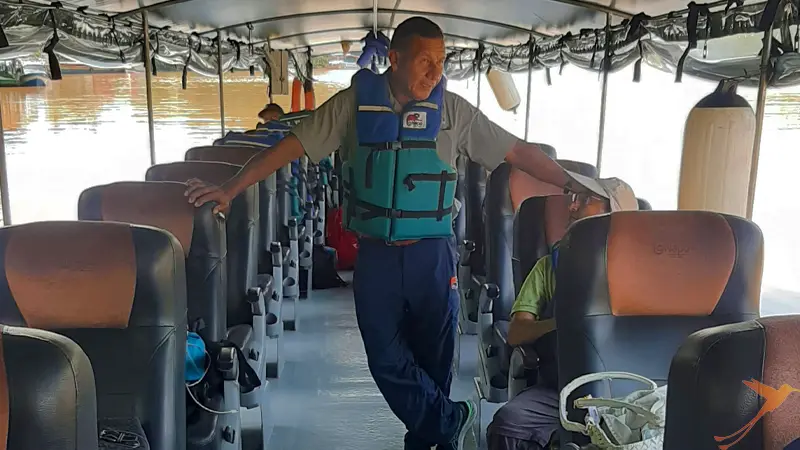
At the Napo Cultural Center - Living with the Añangu Community
The “Napo Cultural Center” belongs to and is located in the territory of the indigenous community “Añangu”, which is Kichua and means “ant”. So, the “Napo Cultural Center” offers the possibility to get an insight into the life of indigenous people and at the same time to enjoy the Amazon rainforest.
At the Napo Cultural Center, we were welcomed with soft drinks and a snack by María, the manager. After a short break, we moved into our rooms, which impressed us because of their great facilities. Diego and I occupied a standard twin room for this one night.
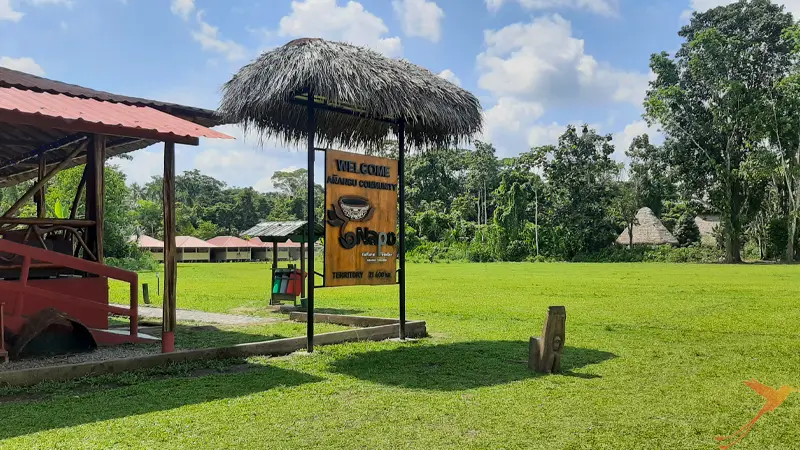
We had a break of just under three hours until we were to go on an excursion with our guide, Miguel. We used our spare time to explore the Cultural Center area on our own. Diego and my excursion paid off after only a few meters, as we discovered various plants and small animals. The highlight was probably a purple plant, maybe 15 meters from our room, that was full of butterflies. Sometimes it’s the small animals that impress us even more.
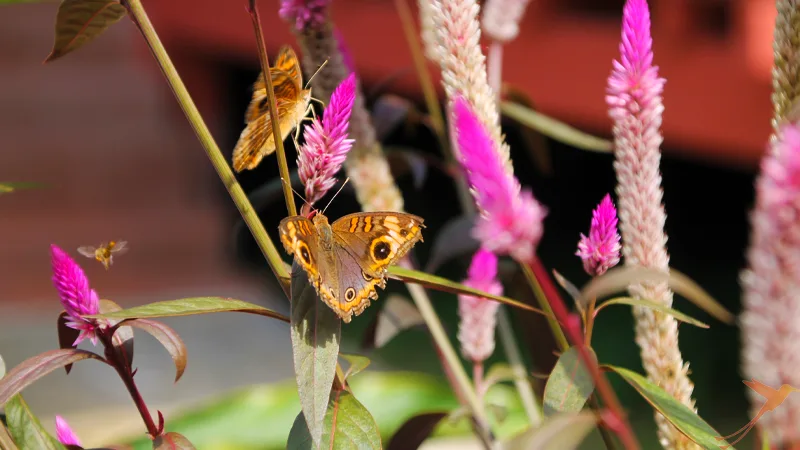
The observation tower of the Napo Cultural Center
At 4:00 p.m. we met Miguel. Together we walked, past the school of the Añangu children, and then continued along a path in the middle of the rainforest. Our destination was the observation tower of the Napo Cultural Center. In the Amazon rainforest, it is generally recommended to wear breathable, thin, long clothing to protect against mosquito bites. Diego wore long loose pants, a shirt and rubber boots that Miguel had given us. I was wearing a long-sleeved sports top with sports leggings and rubber boots as well. Diego and I had also sprayed ourselves with anti-mosquito spray, so we were well protected from insect bites. In the rainforest, we were surrounded by an incredible variety! There were meter-high plants and leaves that were bigger than our heads, if not bigger than we were, and exotic animals. Again and again, we looked around and were impressed, and we even discovered tapir tracks on our way.
On the way to the lookout tower, we stopped to observe animals that crossed our path. The tower, which had its highest point on the crown of a Ceiba tree and was about 35 meters high, offered us a great view.
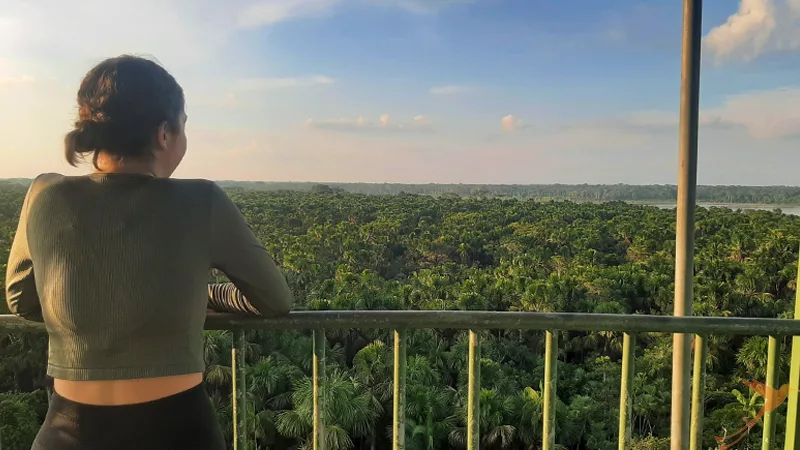
Miguel had a telescope with him that could focus things sharply for several kilometers, making the jungle experience even more incredible. We saw a sloth, toucans, squirrel monkeys, mantled howler monkeys, parrots, and in the distance, the Napo River we had come across.
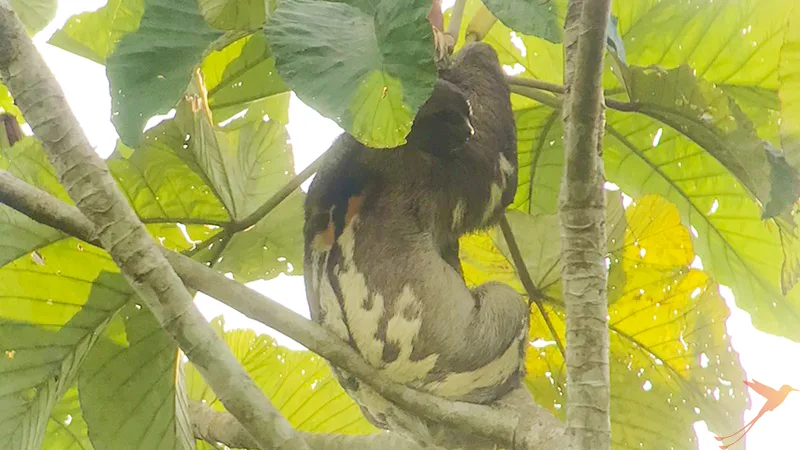
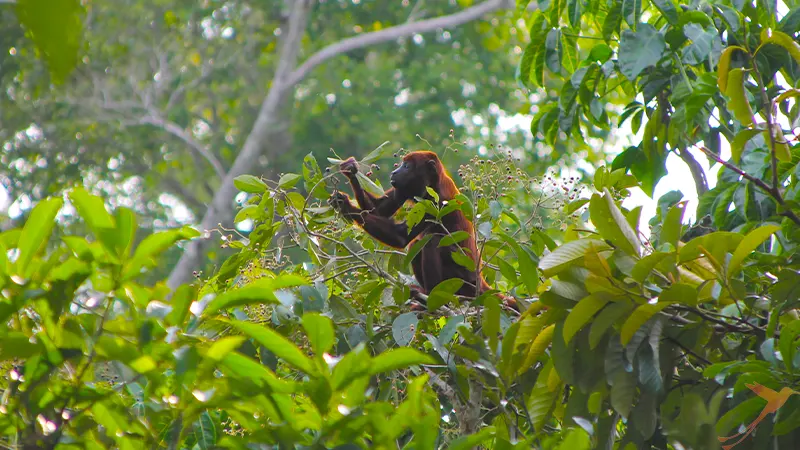
We also watched the sunset, which was great. Maybe it was so beautiful because sunsets are rarely seen in Quito. But probably it was also because the sun was shining on the many trees. We realized that this patch of earth would soon sink into deep black. Miguel, Diego and I left the tower at around 6:15 pm and then had 45 minutes to relax until our dinner.
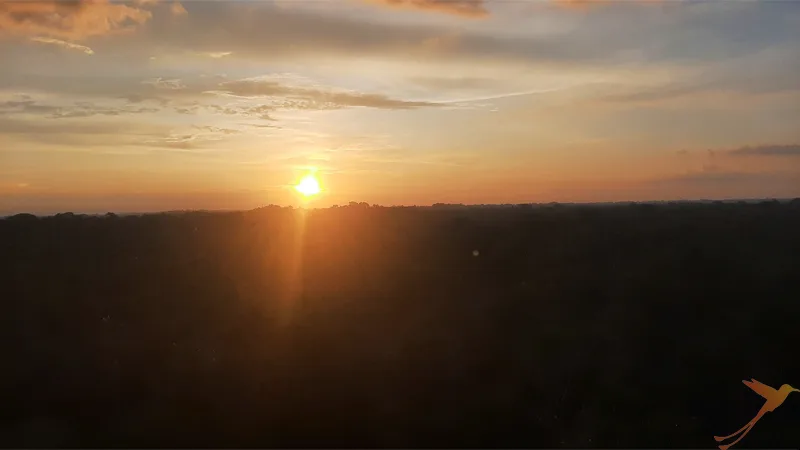
Delicious food an a short night walk at the Napo Cultural Center
Diego and I walked to the restaurant of the “Napo Cultural Center” around 7pm, where a three-course meal was waiting for us. The food was very tasty, Diego got dishes with meat because he has no restrictions. I got vegan alternatives because of my diet. The Napo Cultural Center, as well as the Napo Wildlife Center, are considerate of all diets, whether vegan, vegetarian, intolerances, or otherwise foregoing food. The kitchen seems to be well-prepared for any diet.
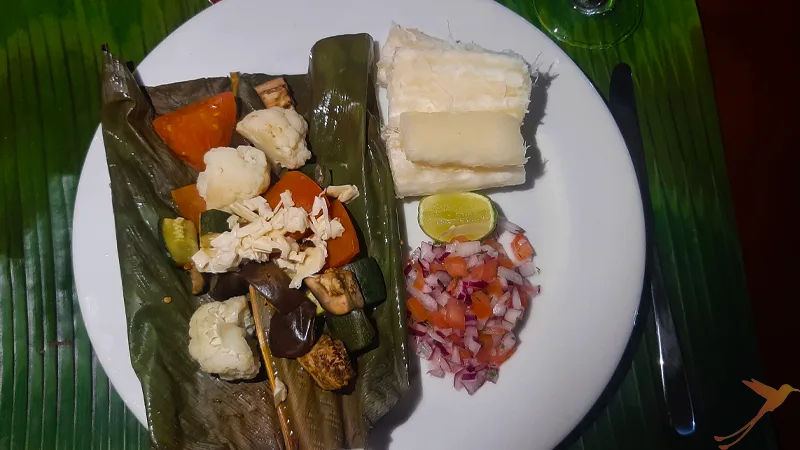

During dinner, we discussed the next day’s schedule with our guide Miguel and then said goodbye to him. On the way to our room, Diego and I spotted a variety of nocturnal animals. We saw small animals such as beetles and moths. Shortly after, we went to sleep exhausted from the day, but also grateful, happy and processing all the impressions, because our alarm clock would ring again around 5:30.
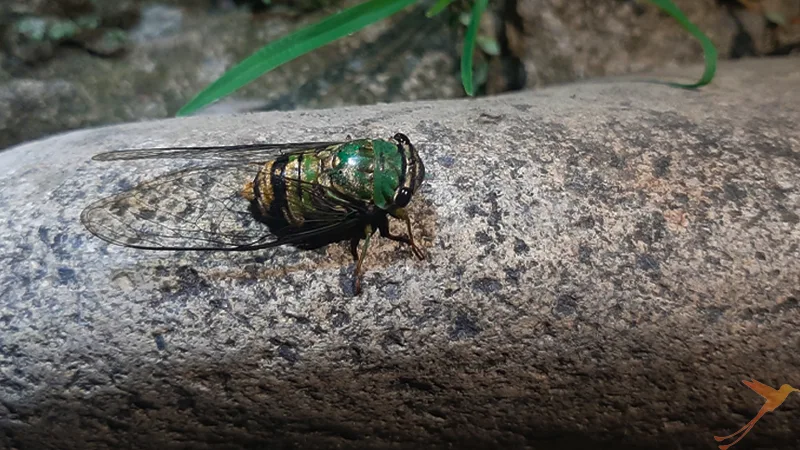
Diego’s and my experiences at the Napo Cultural Center in the National Park Yasuní have piqued your interest? Our team will be happy to advise you about tours in the Ecuadorian rainforest. Also, we offer you the opportunity to customize your trip. Discover with us one of the most biodiverse places on earth and get ready for unforgettable experiences!
Furthermore, we offer individual and group tours to Ecuador and Galapagos.







